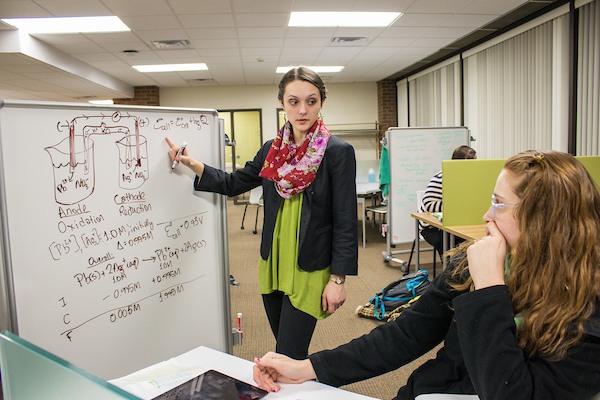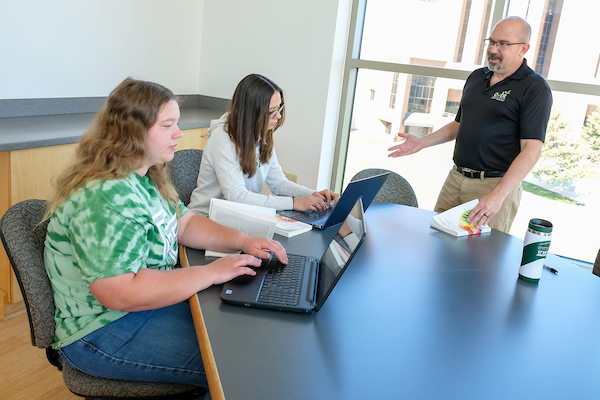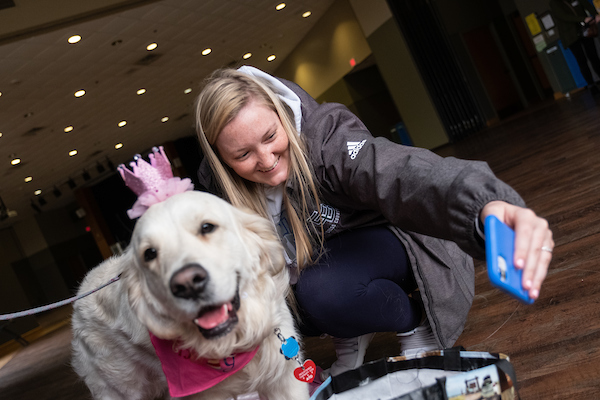Their First Semester
SIS
SIS allows your student to view grades, register for classes, and access fiancial aid information.
Calendars
Never miss a date! Find academic, registration, and final exam calendars.
Resources for Students

Wellness Center
Free or reduced cost couseling and medical services are available to all UW-Green Bay students at the Wellness Center.

The Learning Center
The Learning Center offers free course tutoring, writing assistance, and academic success coaching.

Student Accessibility
Student Accessibility Services helps eligible students find accommodations for physical and mental disabilities.

Dean of Students
The Dean of Students Office is the ultimate advocate for students. They will help find solutions for students who need any type of assistance.
Ten Transitional Stages of First-Year Students
The following phases are typical of new students' adjustment to college. Stages may not occur in the sequence described, and students may not experience all of the phases. However, this information can serve as a useful guideline to understand the challenges students might face during the first year.
Post-high school satisfaction/Pre-college elation
As students experience much excitement over the prospect of attending college, expectations tend to be unrealistic and are based on brief glimpses of college life from campus visits, movies, or television.
Early Separation Anxiety
As they begin to pack and prepare for college, students realize that they are actually leaving behind the support systems of family and friends.
Acute Separation Anxiety
As students leave home, they experience emotional moments with loved ones. They realize that they do not know the unwritten rules of this new campus culture. At this stage, it is especially critical to meet experienced older students, such as resident advisors and Peer Leaders, who can assist with the adjustment process.
The Honeymoon
This is a time of euphoria as students anticipate intellectual excitement and a satisfying social life. Students feel ready to experience all that campus life has to offer.
The End of the Honeymoon
After the frantic rush of orientation and welcome week activities subsides; students realize that college life consists of hard work, frustration and disappointment. Normal events such as long lines and class schedule changes may be unsettling to the new student. Initial grades may be lower than expected, which can come as a shock to the students who "coasted" through high school. Students may work much harder than ever before, only to receive lower grades. At this point, students often experience feelings of homesickness.
Faculty and staff can help ease anxiety by helping students realize that this is normal and that they are not alone.
The Grass is Always Greener
Midway through the first year; students often think they can solve their problems by transferring to another institution. At this point, students should be encouraged to give the college they are attending at least a full year's try. Students should be reminded that they might have had a worse experience at another school and situations that seem impossible in the first semester often disappear later in the year.
You Can't Go Home Again
A first visit home is often traumatic due to a sense that things have changed. Siblings are curious about college life and reunited high school friends tend to exaggerate college success. At this time students may realize that they have changed and may long to return to campus.
Learning to Cope
After about six weeks, students have learned their way around campus and are expanding their circle of friends. Their self-confidence increases, they participate in more activities, and they enjoy campus life.
Fear of Failure
Students often panic around the time of midterm or final examinations as they fully appreciate the amount of work involved. Students should be reminded that thorough course preparation is the best way to ensure a good grade. Warning signs that indicate trouble include panic attacks, procrastination, sleeping over twelve hours a day and avoidance of academic responsibilities.
Putting it all Together
By the middle of the second semester, students notice that classes, residence life and social activities have come together into a well-integrated lifestyle. Students are more confident, better able to make decisions, and are aware of opportunities for both personal and intellectual growth.
Adapted from:
Zuker, F. (n. d.) Transitional trauma: Predictable signs in the transition from high school to college.